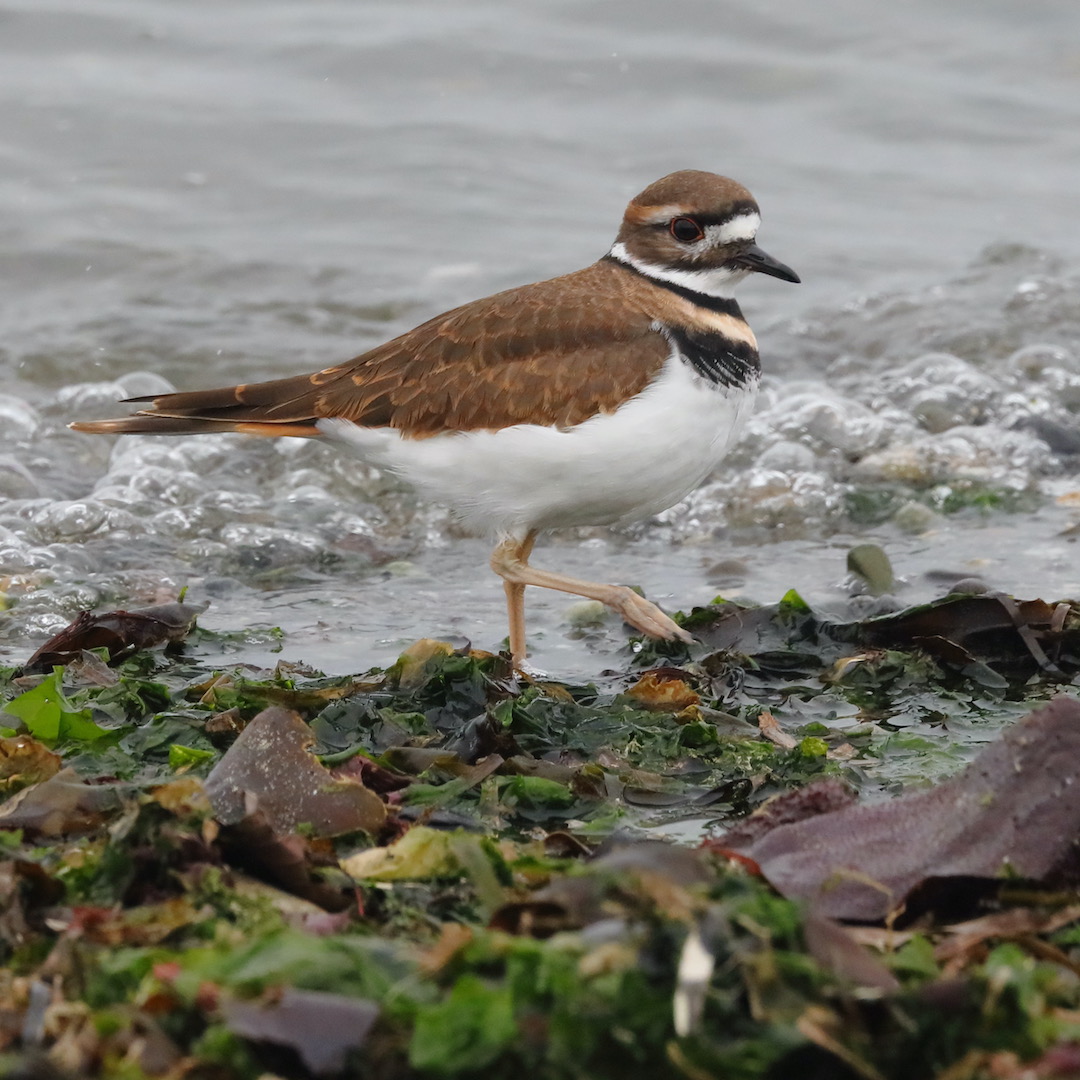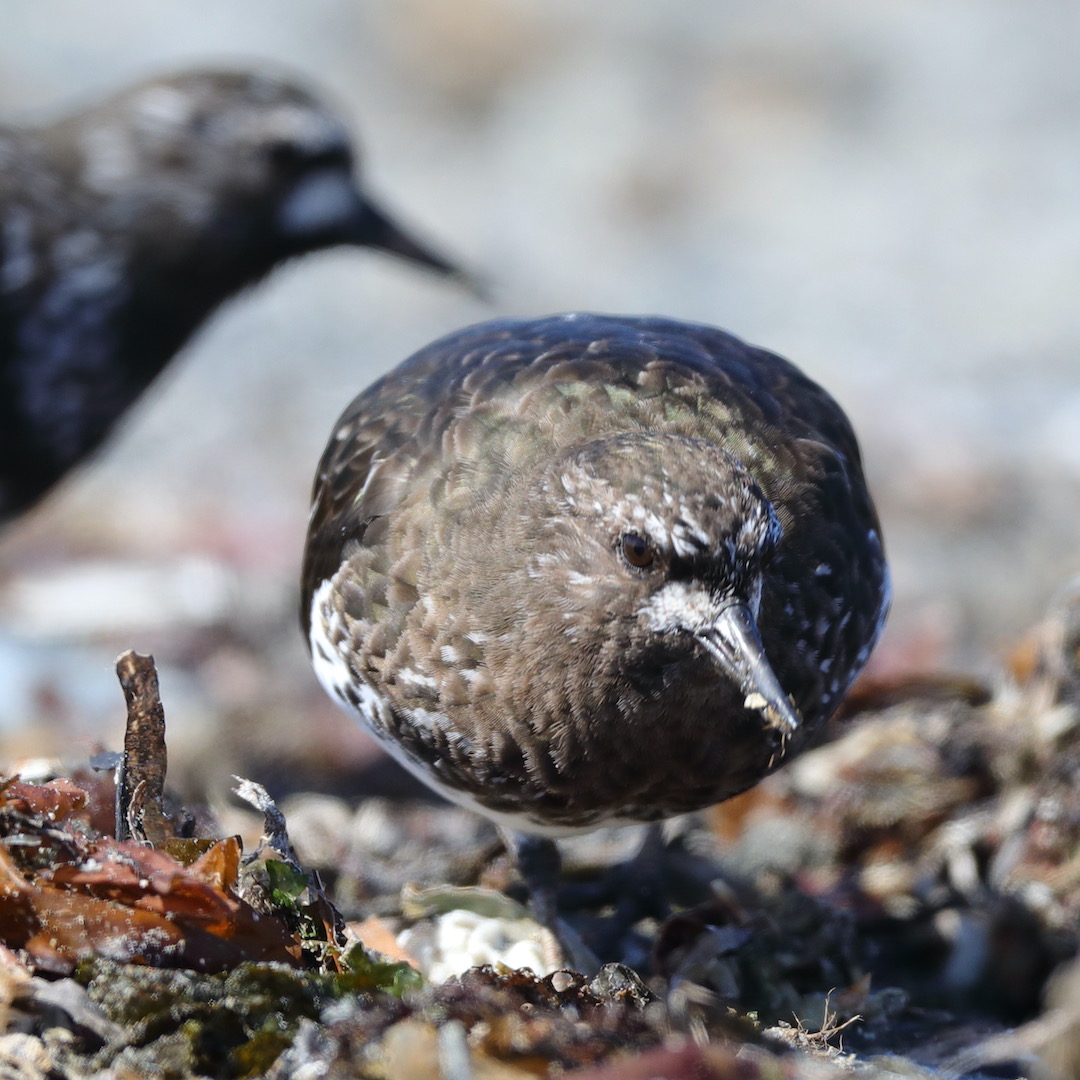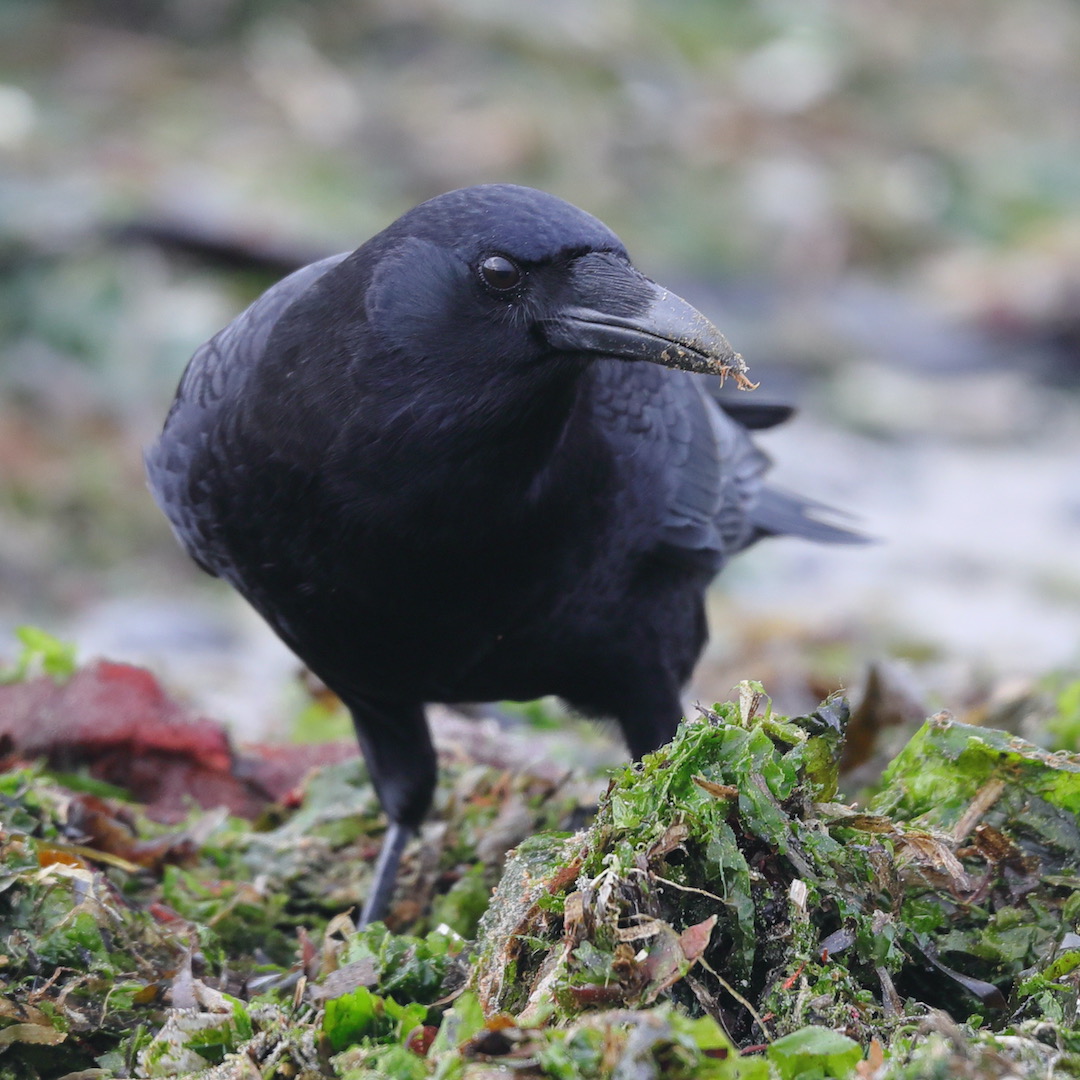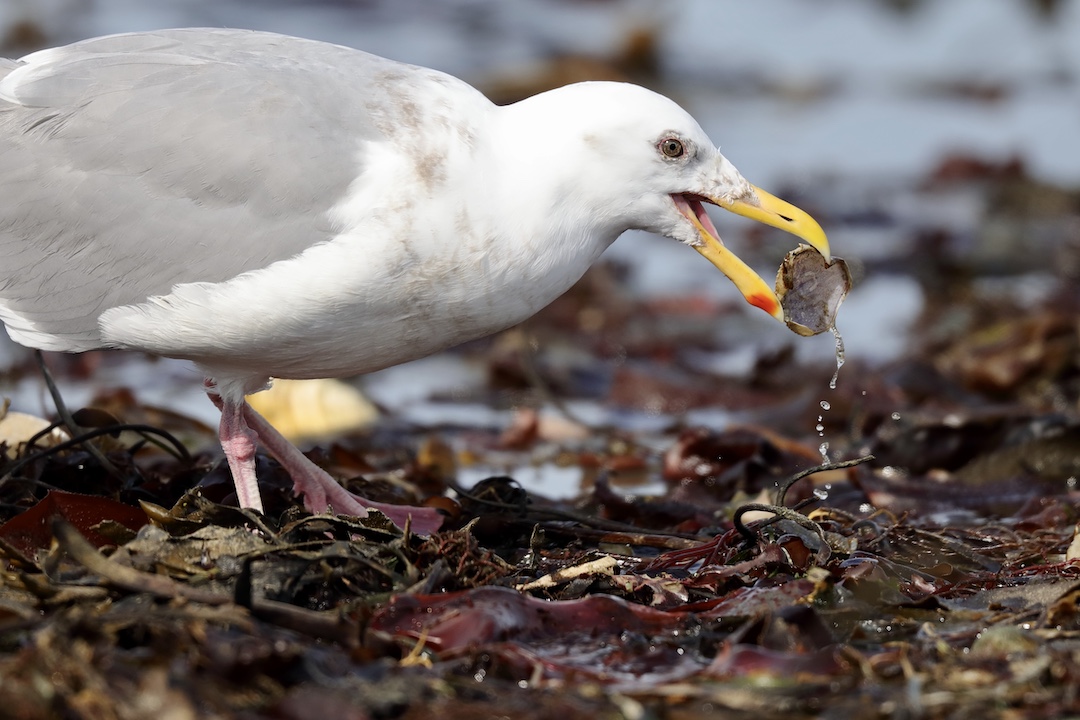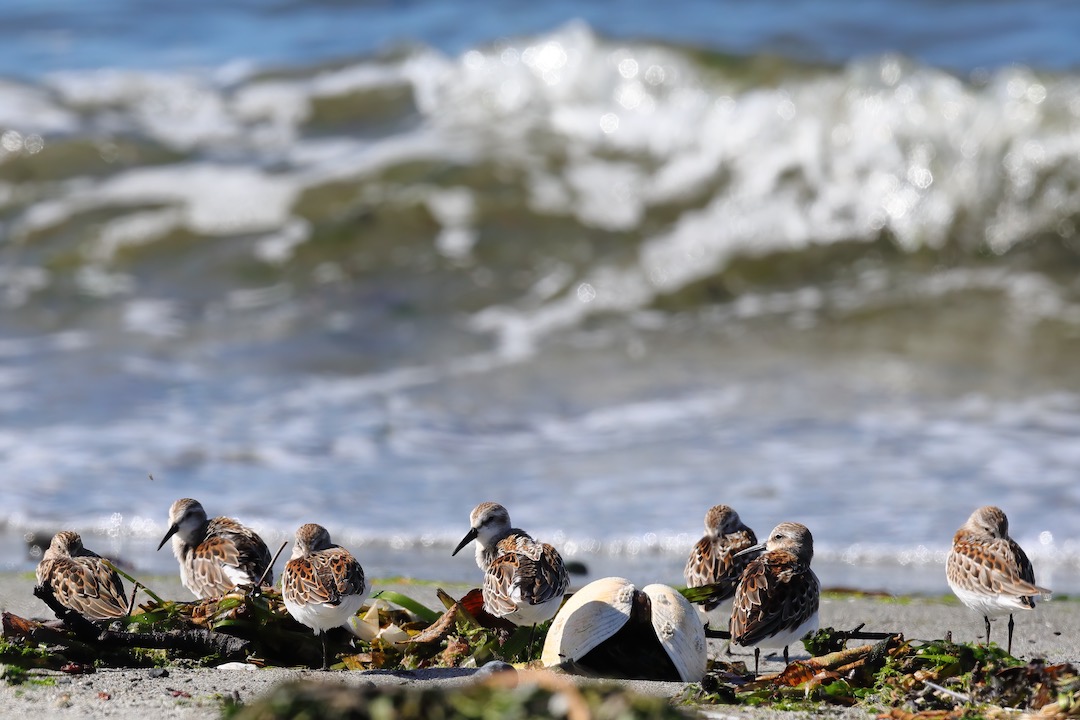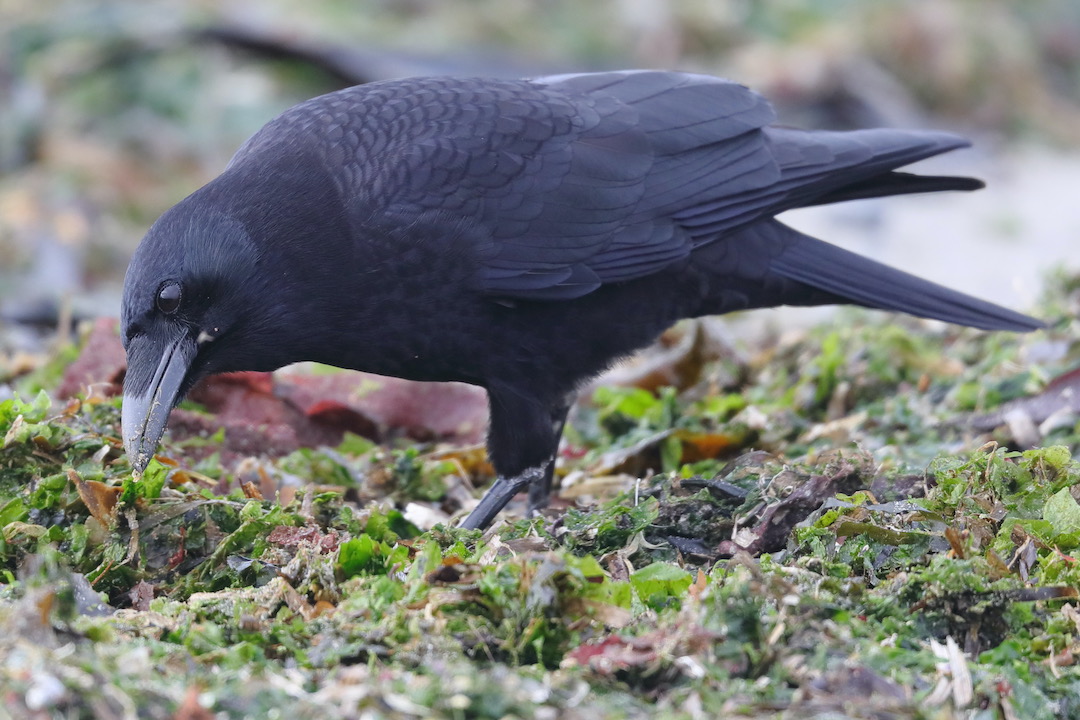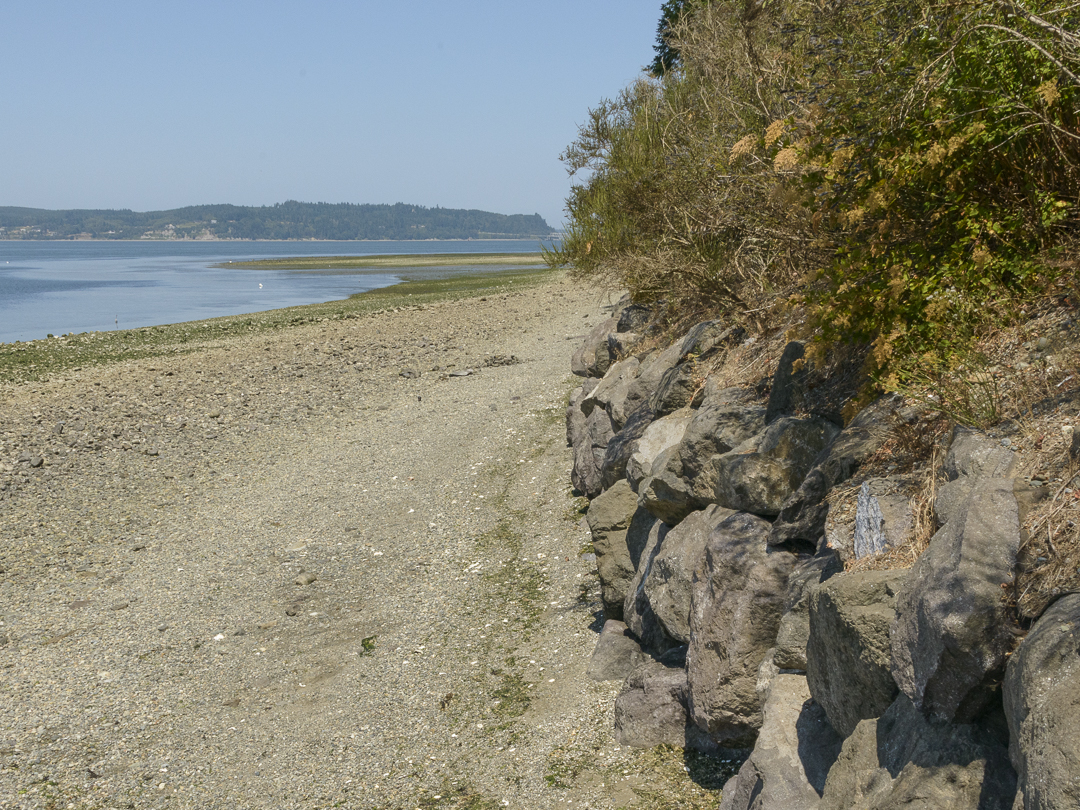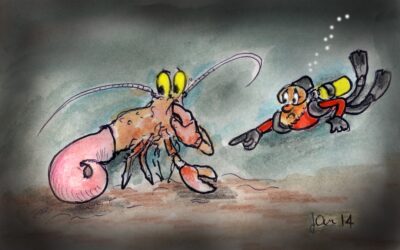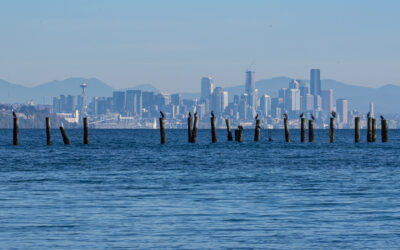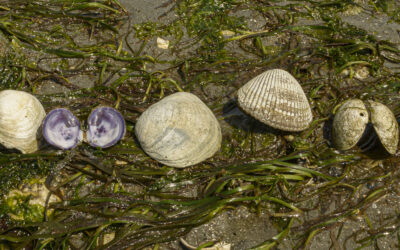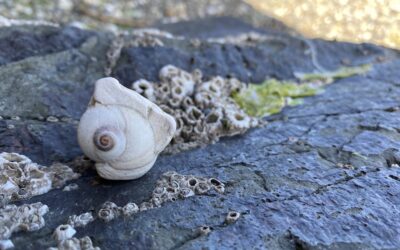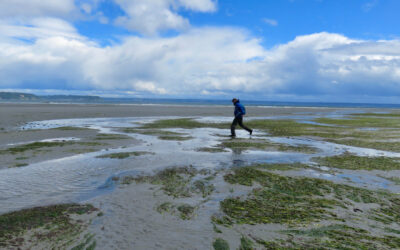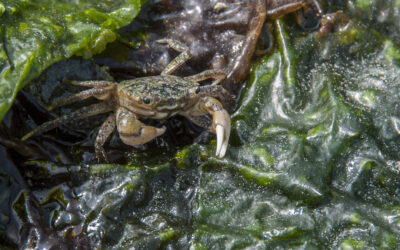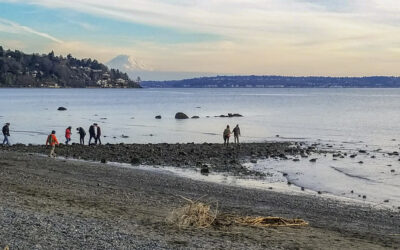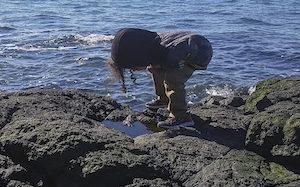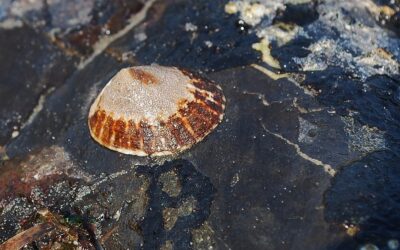BEACH WRACK
by Nick Baca, Summer 2021
photos by Nick Baca except as noted
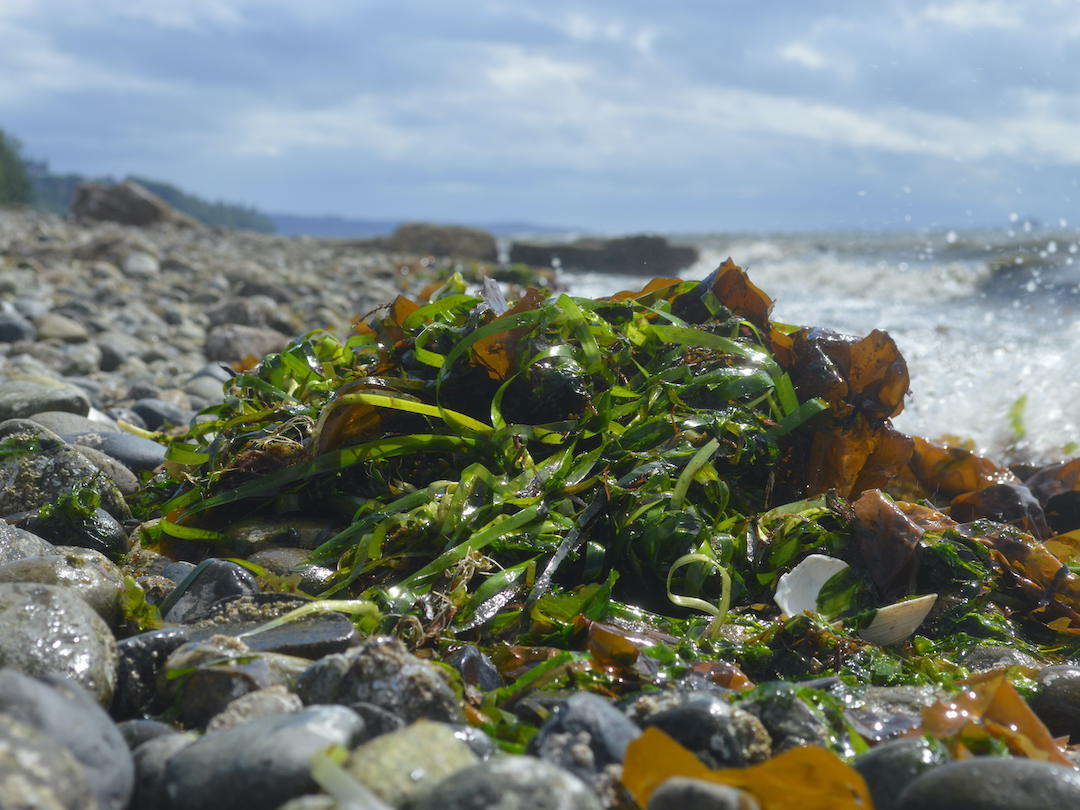
BEACH WRACK
by Nick Baca, Summer 2021
photos by Nick Baca except as noted
On a warm sunny day, the shores of Puget Sound are filled with the smell of rotting seaweed. Flies are heard before they are seen, swarming above these slimy piles. Purples, reds, and greens of seaweed washed up on the beach create a vibrant blanket that provides food and shelter for a variety of animals. Gentle waves rhythmically push these organic substances onto the shoreline, often unnoticed by the average beachgoer. Beach wrack consists of many species of kelp, eelgrass, and surfgrass. These plants and algae become intertwined with branches and plants that grow from the surrounding land, creating a unique shelter and food source that runs parallel to the water’s edge. This unique environment bridges the gap between terrestrial and marine ecosystems and is the byproduct of natural cycles that govern many different physical forces.
photos by Michael Adams
One of the main roles of beach wrack is wildlife habitat. According to Washington Sea Grant and data provided by King County Department of Natural Resources, 263 species interact with wrack that accumulates along Puget Sound as well as on the banks of rivers and streams.
Many crustaceans and invertebrates live amongst the wrack, while the debris and life it supports serve as a food source for several seabirds. Recent research out of the University of California Santa Barbara suggests that nearly 40% of all invertebrates that live on sandy, coastal substrates depend on wrack for survival. This study found that one square meter of wrack was home to roughly 10,000 individual crustaceans. This study also identified other marine and terrestrial invertebrates like kelp flies, rolly pollies, and amphipods. Along Puget Sound, there are three main species of amphipods that inhabit beach wrack, all classified as beach-hoppers.
One well-known species in our region also thrives off of beach wrack: chum salmon fry. Fry are the stage in the salmon life cycle when the fish are five to ten weeks old and leave their homes in gravelly riverbeds. Fry are directly influenced by the accumulation of wrack, as intertidal invertebrates make up a large part of their diet, according to a study from Dalhousie University in 2010.
Beaches are in a constant state of change. It is difficult for these environments to hold on to nutrients for plants to grow. This makes the wrack community an important foraging space for many species at the beach. Wrack also is home to many decomposing agents that turn organic matter into detritus, or waste. This waste holds nutrients and chemicals that are otherwise sparse in this pebbly environment.
photos by Michael Adams
One nutrient system that is influenced by beach wrack is carbon. In a study by the Department of Fisheries and Oceans of British Columbia that linked chum fry to beach wrack, researchers found how important wrack is in transferring carbon between terrestrial and marine food webs. By examining the stomach contents and muscle tissue of chum fry along Howe Sound, a body of water just north of Vancouver, B.C., researchers were able to trace the origin of the carbon found in chum fry to both the land and the sea. The total amount of terrestrial carbon in chum fry ranged from 12.8% to 61.5%. Other animals such as intertidal flies, the main food source for young salmon, also contained a mixture of terrestrial and marine-based carbons. No terrestrial animal living among the wrack consists solely of terrestrial carbons and, similarly, no animals living nearshore consist solely of marine carbons. Based on these findings, scientists concluded that beach wrack beneficially supplies terrestrial and marine carbon to offshore and onshore animals and habitats.
Amounts of carbon vary across coastlines. From the highest banks of the shore, called the supralittoral zone, to the area covered by the tide most of the time, the low intertidal zone, terrestrial carbon decreases the closer it gets to marine habitats.
Armoring refers to the construction of sea walls or barriers meant to prevent erosion of shoreside properties. Shoreline armoring comes in a variety of shapes and sizes, and research has shown that it can alter wrack composition as well as accumulation. A study published by the Journal of Coastal and Estuarine Research Federation found that wrack inhabitants were negatively affected by armoring. Beach-hopper populations were 8.5 times higher at unarmored beaches than armored ones, and similar trends were seen across insects and decomposer organisms. Secondary consumers are indirectly affected, as their food source decreases with the presence of armoring. But as human development continues and as we yearn for picturesque waterfront properties, wrack-filled beaches and shorelines are often left at the wayside.
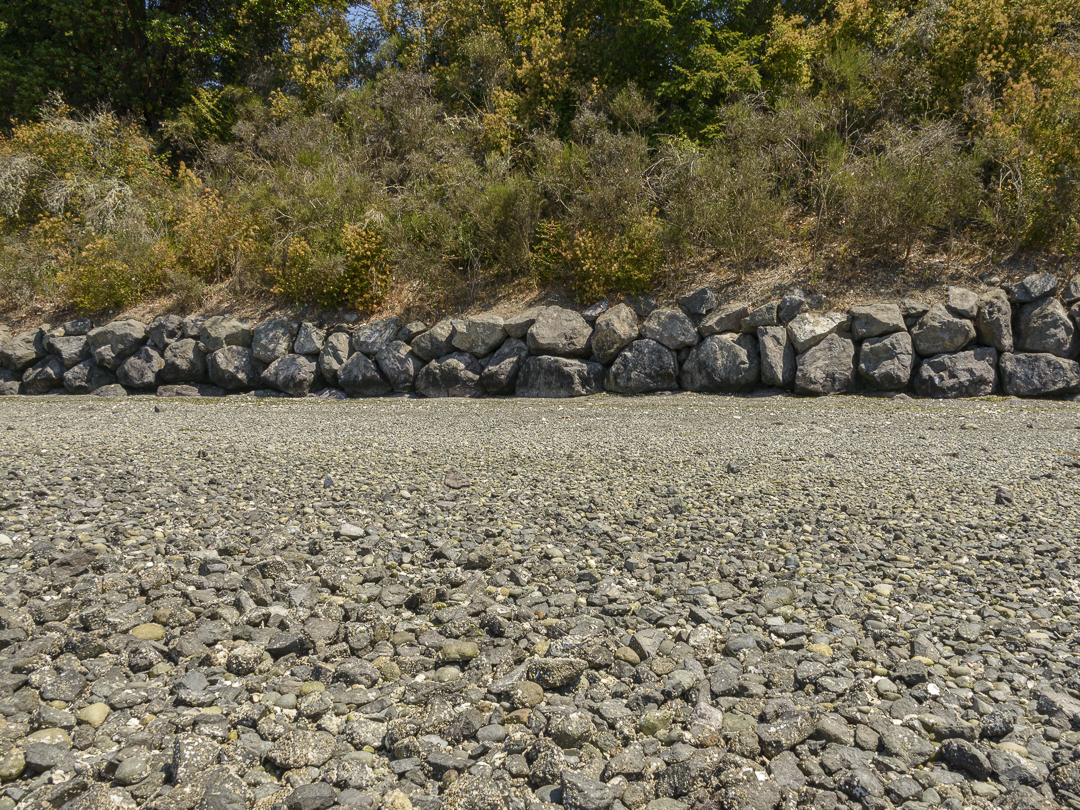
photo by John F. Williams
photo by John F. Williams
Due to a warming climate, the threat of sea level rise brings new challenges to coastal ecosystems. An increase in current sea levels would quicken erosion and destroy habitat where wrack accumulates. Human development in the form of armoring also eliminates wrack build up. By removing areas for wrack to wash on shore, the food and shelter it supplies can disappear.
Editor’s note: Almost a third of Puget Sound shorelines have been armored, but many groups and individuals are working to educate shoreline property owners about better alternatives. Reducing shoreline armoring is a key goal of the Puget Sound Partnership. You can learn more at this web page:
Vital Signs | Shoreline Armoring (wa.gov)
Table of Contents, Issue #12, Summer 2021
Hermit Crabs
by Sadie Bailey, Summer 2021 photos and drawings by Jan Kocian fact checked by Greg Jensenby Sadie Bailey, Summer 2021 photos and drawings by Jan Kocian fact checked by Greg Jensen The waves fly onto the beach as if they were racing each other. Which one can...
Piling Up
by Jeff Adams, Summer 2021 photos by Jeff Adams except as noted fact checked by Andy Lambphoto by John F. Williamsphoto by John F. Williamsby Jeff Adams, Summer 2021 photos by Jeff Adams except as noted fact checked by Andy LambAs a marine ecologist and nature...
RVs of the Beach
by Tom Noland, Summer 2021 photos by Tom Noland except as noted fact-checked by Greg Jensenby Tom Noland, Summer 2021 photos by Tom Noland except as noted fact-checked by Greg JensenWalking the shore of Cama Beach State Park on one of the lowest tides in recent...
Shell Shapes
by Chris Rurik, Summer 2021photo by Sarah Cavanaughphoto by Sarah Cavanaughby Chris Rurik, Summer 2021 Photos by Sarah CavanaughI have a collection of broken shells. They litter my desk and drawers, wave-smoothed fragments of curves and spirals, half-bleached, like...
Moon Snails at Low Tide
by Marilyn DeRoy, Summer 2021 Photos & video by Marilyn DeRoyBy Marilyn DeRoy, Summer 2021 Photos & video by Marilyn DeRoyAt the end of May, we had two days of minus 3.8’ (minus 1.15 m) tides at the northern end of the Kitsap Peninsula; wonderful for...
A Rainbow of Crabs
by Laura Marx, Summer 2021 fact-checked by Greg Jensen photo by John F. Williamsphoto by John F. Williamsby Laura Marx, Summer 2021 fact-checked by Greg Jensen On a Saturday in early March, in an attempt to shake off the last of the winter lockdown slump, my partner...
Poetry-12
Summer 2021Photo by Jessica C. LevinePhoto by Jessica C. LevineSummer 2021To begin this section of poetry, here are three haikus which speak to our excessive heat this summer.by Drea Dangerton Cold water absentDrive belt for water massesFrayed, hardly churning...
Hello Under There
Proper Etiquette for Exploring the Beach by Sarah Lorse, Summer 2021 photo by Kaylani Siplinphoto by Kaylani SiplinProper Etiquette for Exploring the Beach by Sarah Lorse, Summer 2021 At first glance, the beaches along the Salish Sea may seem desolate, except for the...
Home Sweet Home
by Barbara Erickson, Summer 2021 Photos by Barbara Erickson except as noted by Barbara Erickson, Summer 2021 Photos by Barbara Erickson except as notedWHOOPEE! With the approach of summer and loosening of COVID restrictions, it’s time to head out exploring! For me,...
PLEASE HELP SUPPORT
SALISH MAGAZINE
DONATE
Salish Magazine contains no advertising and is free. Your donation is one big way you can help us inspire people with stories about things that they can see outdoors in our Salish Sea region.
We also don't advertise Salish Magazine, so please spread the word of this online resource to your friends and colleagues.
Thanks so much for your interest and your support.
We also don't advertise Salish Magazine, so please spread the word of this online resource to your friends and colleagues.
Thanks so much for your interest and your support.

